Accepted used and waste products
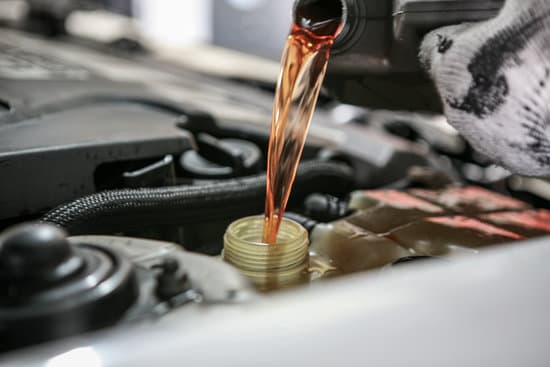
Products: engine oil, machine oil, gear oil, lubricating oil
Info: Mineral oils mixed with solvents or other organic liquids can no longer be recycled. The highly toxic PCB (polychlorinated biphenyl) as an additive in electrical oil radiators, condensers and transformers until the 1970s and can still be found in older appliances today. It should never be mixed with regular mineral oil.
Avoiding/reducing: Use high-quality mineral oils with a long service life and use low oil consumption machinery and equipment. Never use used oil as a combustible fuel.
Recycling/environmentally sound disposal: Uncontaminated mineral oils are recycled back into mineral oils. The emulsions are separated into oil and water and the oil is used as an energy source. Contaminated oils and oils contaminated with PCBs are disposed of by high-temperature treatment.
Used oil
General information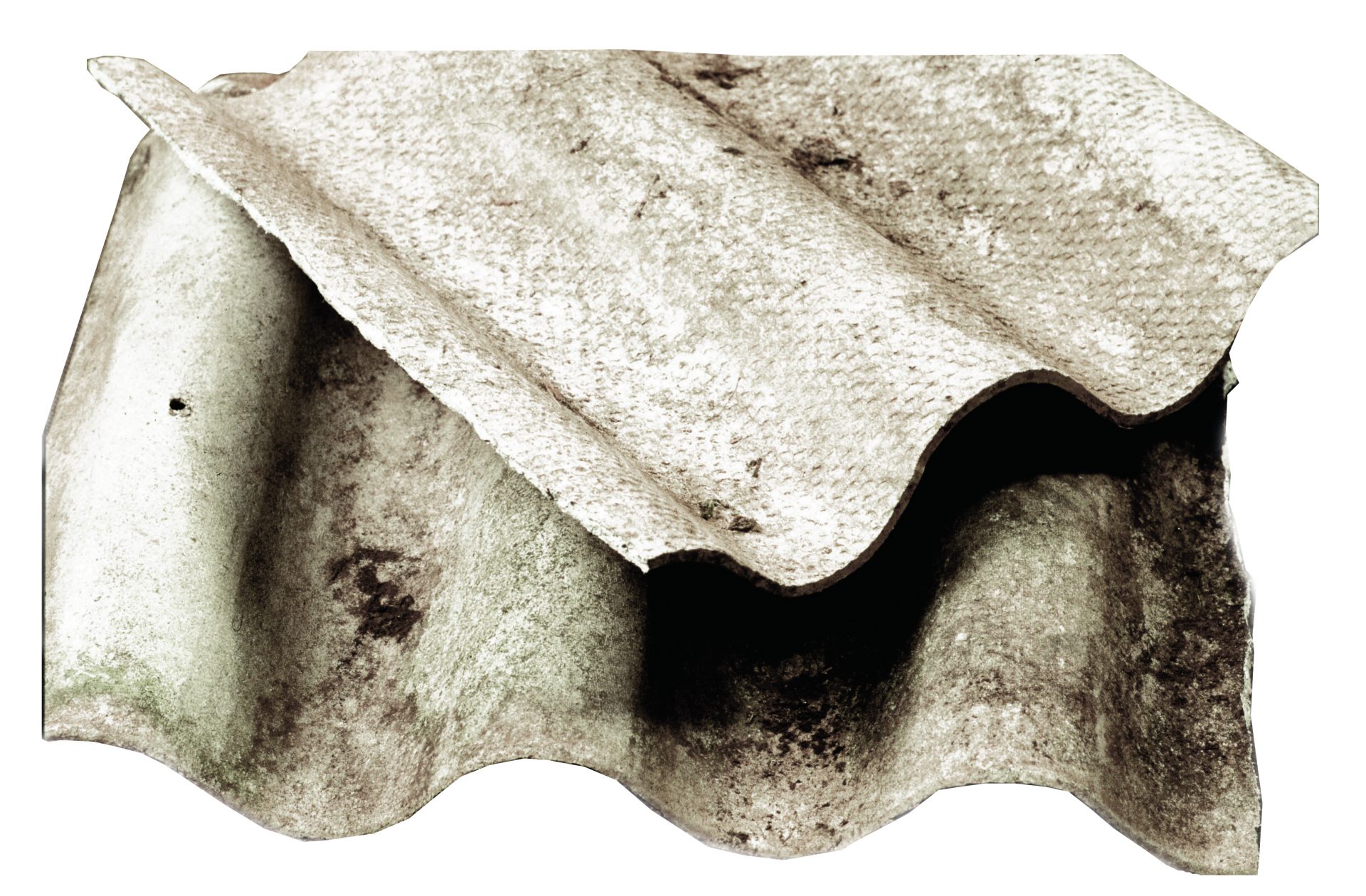
Products: Asbestos cement panels, Eternit panels, flower boxes, electrical distribution boxes
Info: Asbestos is a naturally occurring, fine-fibred rock that has a number of useful properties. The danger of asbestos lies in the pointed shape of the fibres, which can penetrate the lungs and destroy sensitive tissue (asbestosis, cancer). When handling products containing asbestos, care must be taken not to create dust (moisten the products!). For safety reasons, wear a dust mask when working with products containing asbestos. Under no circumstances should asbestos cement boards be broken or sawn.
Avoiding/reducing: New products are generally asbestos-free and no longer pose a health risk.
Recycling/environmentally sound disposal: Dispose of asbestos-containing materials and products at a special waste disposal site for inert materials.
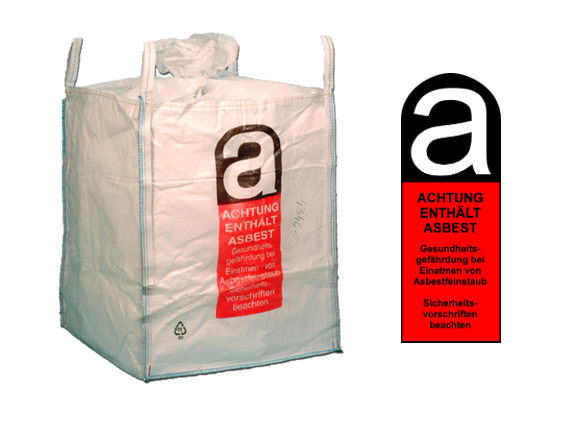
Asbestos cement and Eternit
General information
Products: Lacquers, paints – including latex paints, adhesives containing organic solvents or hazardous substances.
Info: Paints and lacquers consist of pigments (dyes), solvents, binders and other additives. In the past, toxic heavy metal compounds were frequently used as pigments but also recent paints and lacquers (that are for instance solvent-free) contain additives such as preservatives, which can be harmful to health.
Avoiding/reducing: Use solvent-free water-based paints and natural oils and waxes for wood treatment. Avoid solvent-based paints. Use environmentally friendly paints and lacquers.
Recycling/environmentally sound disposal: Recycling of metal an plastic packaging, use of paint and lacquer residues as substitute fuel.
Paints and lacquers
General information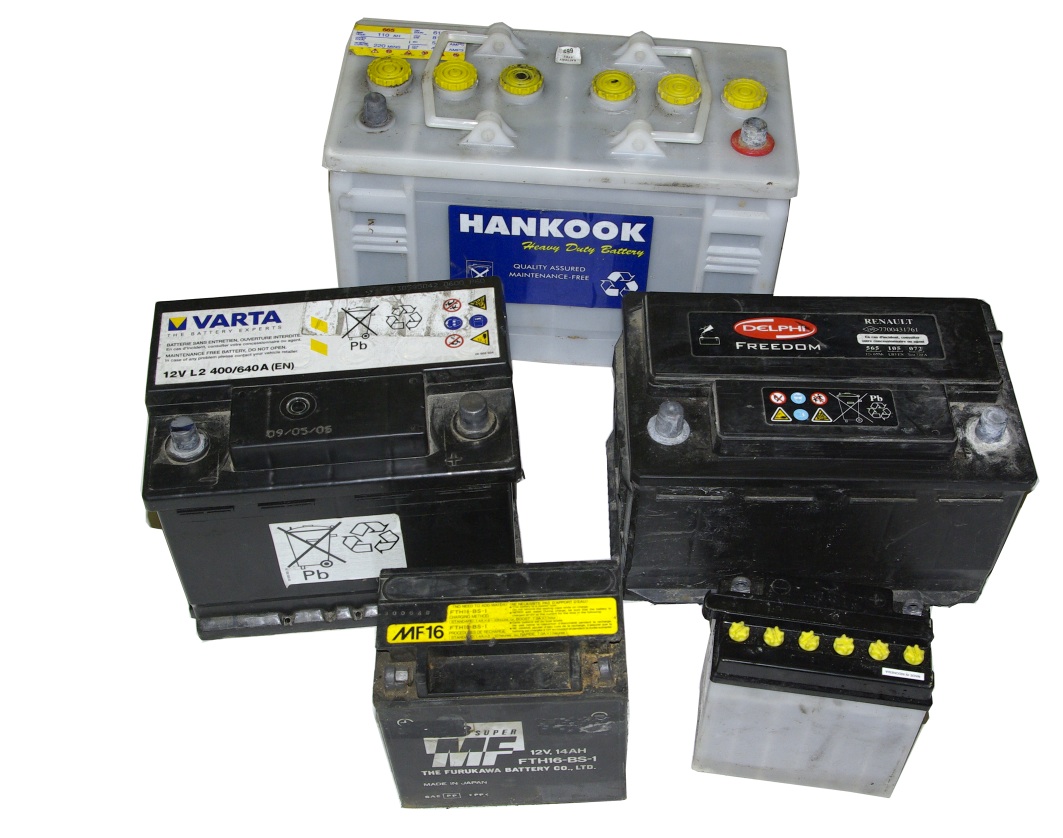
Products: Lead accumulators: car, motorbike and truck batteries, nickel-cadmium accumulators: emergency power batteries
Info: These batteries contain heavy metals that are hazardous to the environment and fatal to the human organism. The acid (sulphuric acid) from vehicle batteries and the alkaline solution (potassium hydroxide solution) from emergency power batteries are highly corrosive.
Avoiding/reducing: Use high-quality batteries. They are reliable and have a long service life.
Recycling/environmentally sound disposal:
Lead-acid batteries are dismantled. Lead and PP plastics are supplied to industry as a raw materials. Battery acid is neutralised.
Nickel-cadmium batteries are dismantled. Iron, ferronickel, cadmium and some plastics are supplied to industry as raw materials and the alkaline solution is neutralised.
Lead and nickel-cadmium accumulators
General information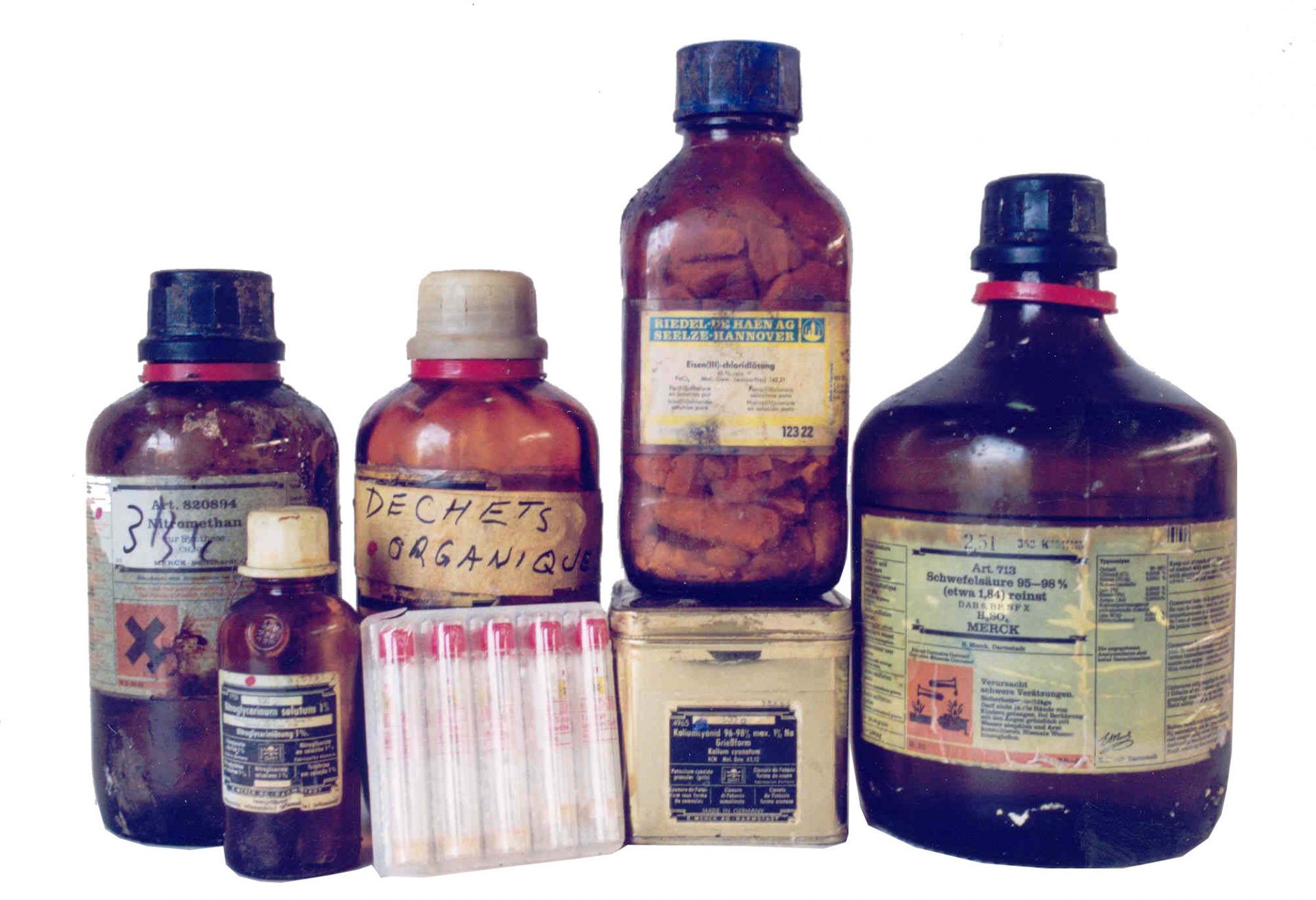
Products: Laboratory chemicals in containers up to 30 litres
Info: Chemicals can be toxic, carcinogenic, corrosive, flammable or oxidising. They endanger soil, water, plants and wildlife, and our health.
Avoiding/reducing: When using chemicals, be sure to use the correct dosage and consult a specialist retailer for environmentally friendly alternatives.
Recycling/environmentally sound disposal: Chemicals are treated at high temperatures in a suitable facility to destroy the harmful substances.
Laboratory chemicals
General information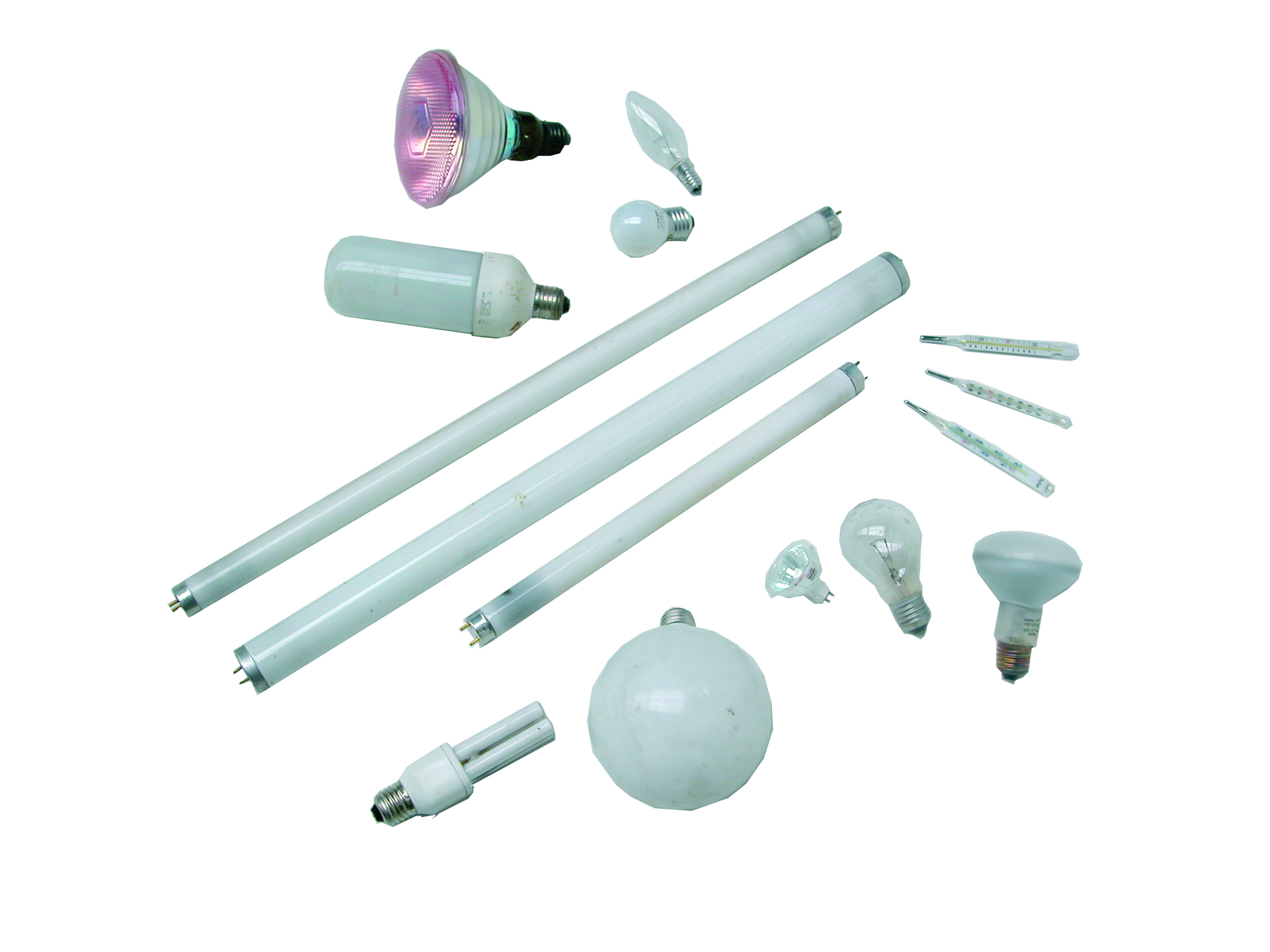
Products: Energy-saving lamps, high-pressure mercury lamps, high- and low-pressure sodium lamps, metal halide lamps, fluorescent lamps, lamps from tanning beds (solarium)
Info: Mercury can cause brain and nerve damage and metabolic disorders. Low-pressure sodium lamps contain elemental sodium, which reacts explosively with water. Lamps are collected via the SENS eRecycling system.
Avoiding/reducing: Use low-energy lighting to save electricity and money. Ask your retailer which types is suitable for your use.
Recycling/environmentally sound disposal: Rod-shaped lamps are treated in a chemical process and the mercury is immobilised as mercury sulphide. Glass and aluminium are supplied to industry as raw materials. Non-rod-shaped lamps are crushed in a closed system and the glass and metal fractions are recycled. Mercury-containing lamp powder is deposited in a special landfill.
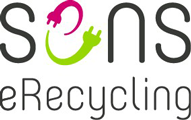
Lamps (containing mercury)
General information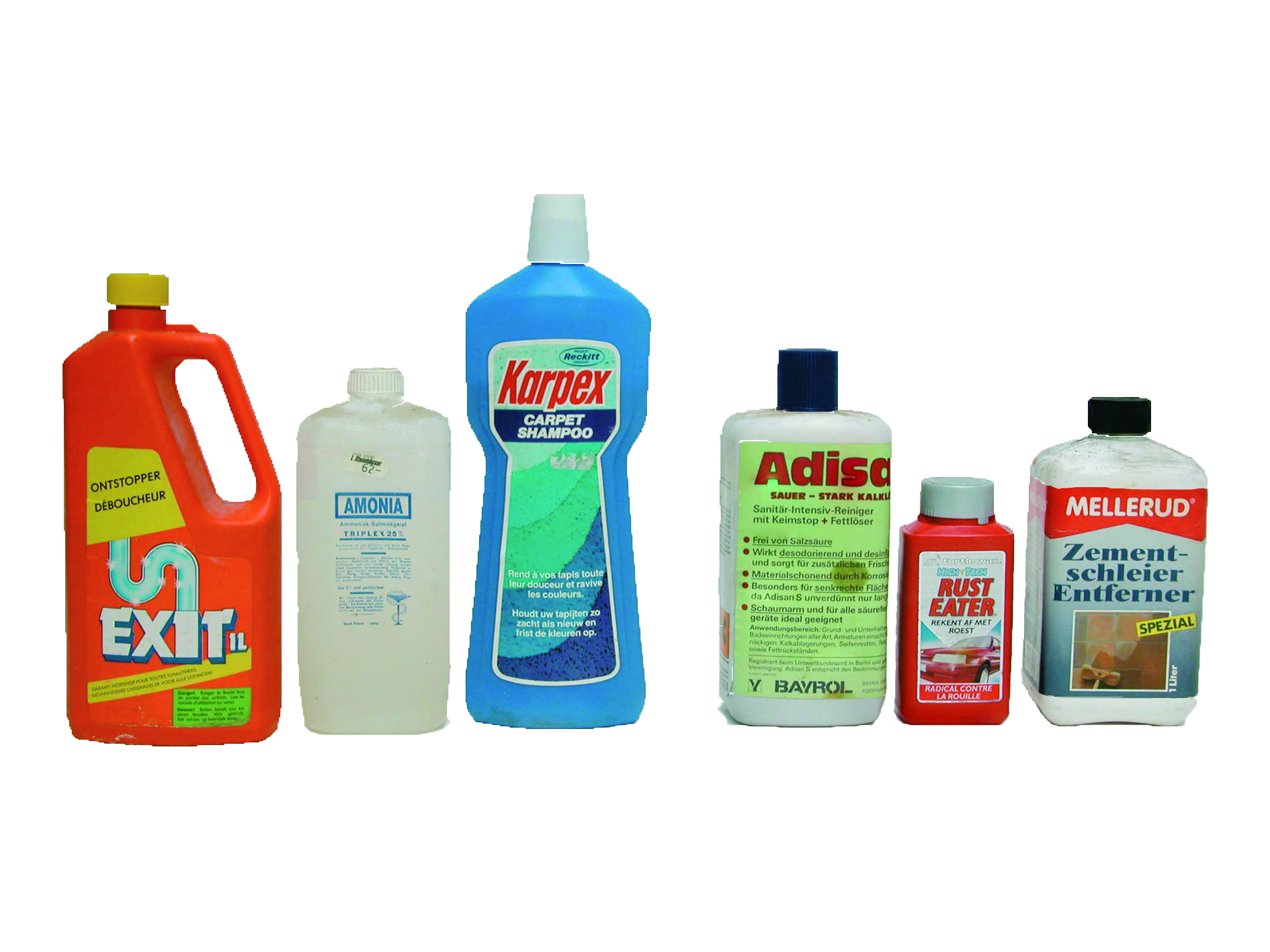
Products: Soda, alkaline detergents with sodium hydroxide, potassium hydroxide as household chemicals; bleach (eau de Javel)
Info: Lyes and alkaline cleaning agents are corrosive, i.e. they destroy human tissue and pollute water. Large quantities can impair the functioning of sewage treatment plants. Detergents can react very violently with each other, generating a lot of heat and releasing harmful gases such as chlorine gas. Never mix different detergents as this can cause dangerous reactions. Always store detergents in their original containers.
Avoiding/reducing: Before buying special cleaning products, consider whether you really need them. In many cases, less is more. Use the right amount to save money. Use environmentally friendly detergents and cleaning agents.
Recycling/environmentally sound disposal: Cleaning agent residues are incinerated at high temperatures in a suitable facility.
Lyes and alkaline detergents
General information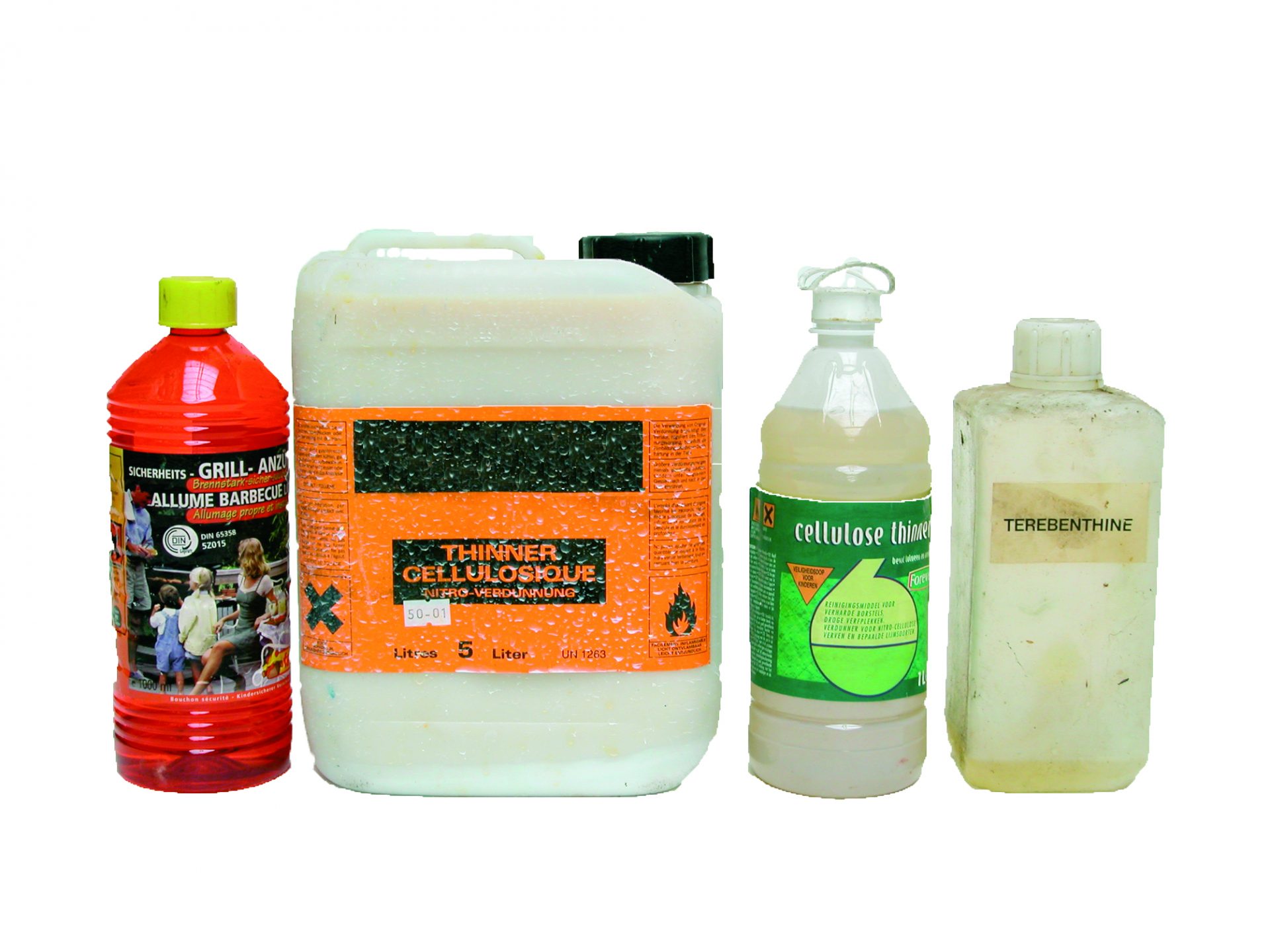
Products:
Acetone, alcohols, methylated spirits, cold cleaning agents, nitro thinners, thinners, white spirit, toluene, benzene, xylene, etc.
Only containers up to 30 litres will be accepted.
Info: Most solvents are flammable, more or less harmful to health and pollute the environment. When handling flammable solvents, make sure that there are no ignition sources in the vicinity, otherwise fires and/or explosions may occur. Store containers with due care.
Avoiding/reducing: Use solvents sparingly and use low-solvent or water-soluble products wherever possible. Ensure that there is adequate ventilation.
Recycling/environmentally sound disposal: Solvents collected in pure form can be distilled and returned to the economic cycle. Contaminated and mixed solvents should be treated at high temperature in a suitable facility.
Solvents
General information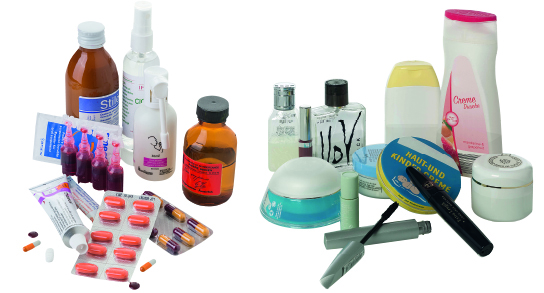
Products: Medicines: tablets, sprays (pump sprays), ointments, syrups, drops
Cosmetics: body care products, bath products
Medical waste: used syringes and needles
Info: The active ingredients in medicines can harm people and the environment if used improperly or in high concentrations. The same applies to cosmetics. Used syringes and needles pose a significant potential hazard during disposal and should be placed in secure containers.
Avoiding/reducing: Buy only the amount of medication you need. Don’t go straight for the pills – many ailments can be treated with natural remedies or alternative therapies.
Recycling/environmentally sound disposal: Medicines, cosmetics, syringes and needles that are no longer usable are treated at high temperatures in a suitable facility.
Medicines and cosmetics
General information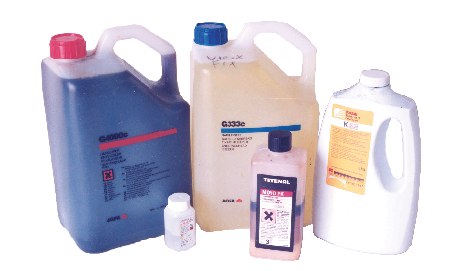
Products: Photographic chemicals; developers, fixers
Info: Chemicals can be toxic, carcinogenic, corrosive, flammable or oxidising. They endanger soil, water, plants and wildlife, and our health.
Avoiding/reducing: When using chemicals, be sure to use the correct dosage and consult a specialist retailer for environmentally friendly alternatives.
Recycling/environmentally sound disposal: Fixers are desilvered in an electrochemical process. The desilvered photographic chemicals are doped with ammonia and used as a DeNox agent in cement kilns.
Photographic chemicals
General information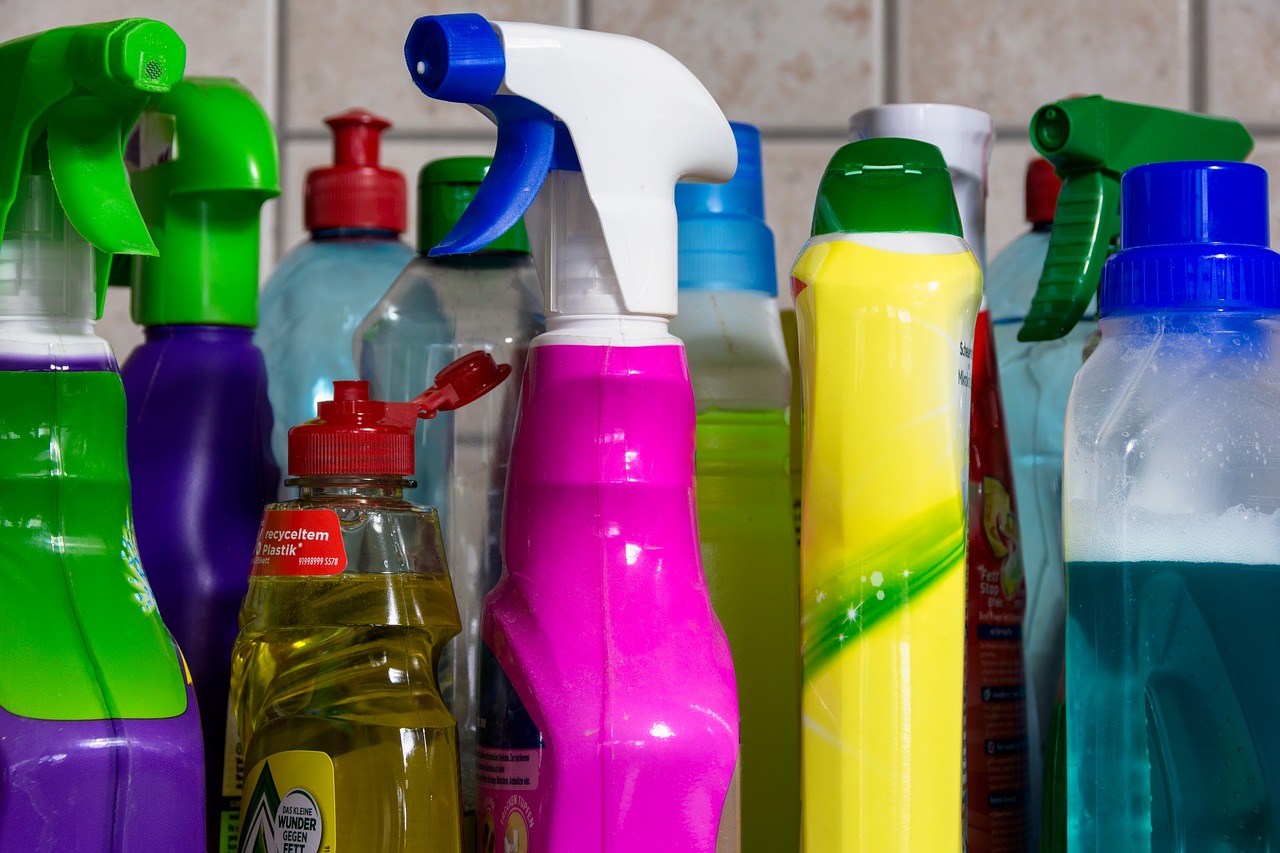
Products: hydrochloric acid, acetic acid/acetic cleaning agents, etc.
Info: Acids and acidic detergents are corrosive, i.e. they destroy human tissue and pollute water. Larger quantities can impair the functioning of sewage treatment plants. Detergents can react very violently with each other, generating a lot of heat and releasing harmful gases such as chlorine gas. Never mix different detergents as this can cause dangerous reactions. Always store detergents in their original containers.
Avoiding/reducing: Before buying special cleaning products, consider whether you really need them. In many cases, less is more. Use the right amount to save money. Use environmentally friendly detergents and cleaning agents.
Recycling/environmentally sound disposal: Cleaning agent residues are incinerated at high temperatures in a suitable facility.
Acids and acidic detergents
General information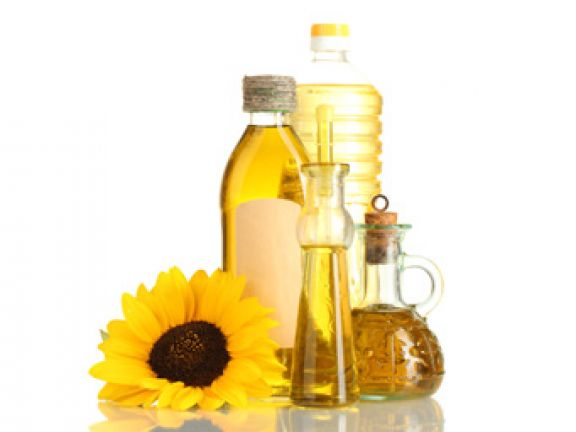
Products: e.g. frying fats, leftover salad oils, fondue oils; no mineral oils, no lubricating greases
Info: New technologies make it possible to process vegetable fats into high-quality biodiesel. Direct use as fuel is also possible.
Avoiding/reducing: Cooking oils and fats should never be poured down the sink, as this can cause blockages and pollute sewage treatment plants. Avoid unnecessary amounts of water or frying and roasting residues in fats and oils, as these substances prevent recycling.
Recycling/environmentally sound disposal: Cooking oils and fats are converted into biodiesel (fatty acid methyl ester FAME) at a processing plant. Contaminated fats and oils are sent to incinerators for energy recovery.
Cooking oils and fats
General information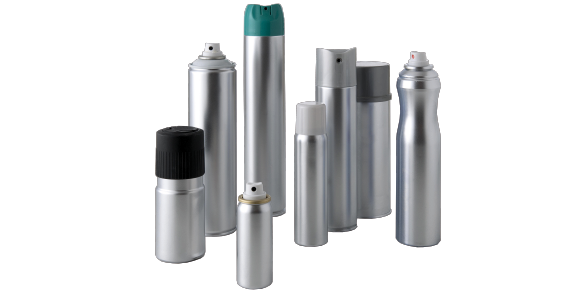
Products: any kind of aerosol can, assembly foam cans (OCF foam cans); and also for personal care, food, etc.
Info: Aerosol cans are under pressure due to the propellant gases they contain (propane and butane) and can explode at higher temperatures or if used improperly. Depending on the type, assembly foam cans contain one or two chemical components which, when activated, react to form a plastic foam. The contents of spray and assembly foam cans can be flammable, toxic and corrosive.
Avoiding/reducing: Where possible, use refillable aerosol systems or pump sprays. Where possible, use assembly foam cans with a take-back symbol (e.g. P.D.R.), as the recycling fee for these cans is included in the new price and they are taken back free of charge.
Recycling/environmentally sound disposal: The metals of the aerosol cans are recycled and the remaining contents are treated at high temperatures in an suitable facility. Assembled foam cans are processed in a dedicated facility to recover all metals, propellants and components.
Spray cans
General information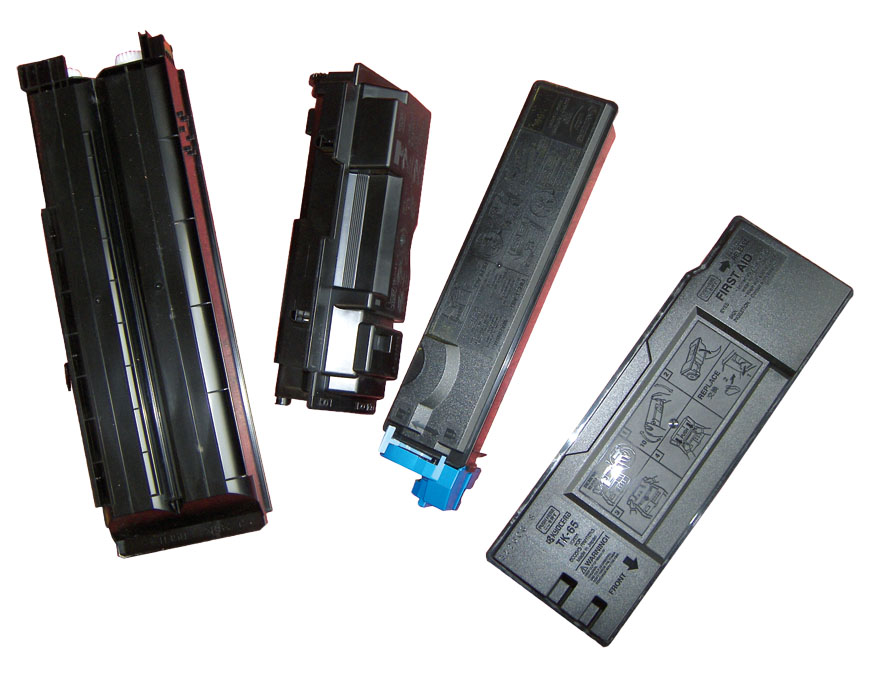
Products: Toner cartridges, ink cartridges
Info: Even when ink or toner cartridges are empty, fine residues remain inside; toner powder is suspected of being carcinogenic. Empty ink and toner cartridges should not be disposed of with household waste, they can be recycled.
Avoiding/reducing: Use refillable toner and ink cartridges to save money and protect the environment. Print only the information you need.
Recycling/environmentally sound disposal: Refillable ink cartridges are rinsed, electronic parts checked and replaced if necessary. They are refilled and returned to the retailer after a quality check. Refillable toner cartridges are cleaned, disassembled and worn parts replaced. After refilling, they are checked and returned to the retailer. Non-refillable toner and ink cartridges are shredded and recycled as much as possible (plastic and metal components). Toner residue is sent to incinerators for energy recovery.
Toner and ink cartridges
General information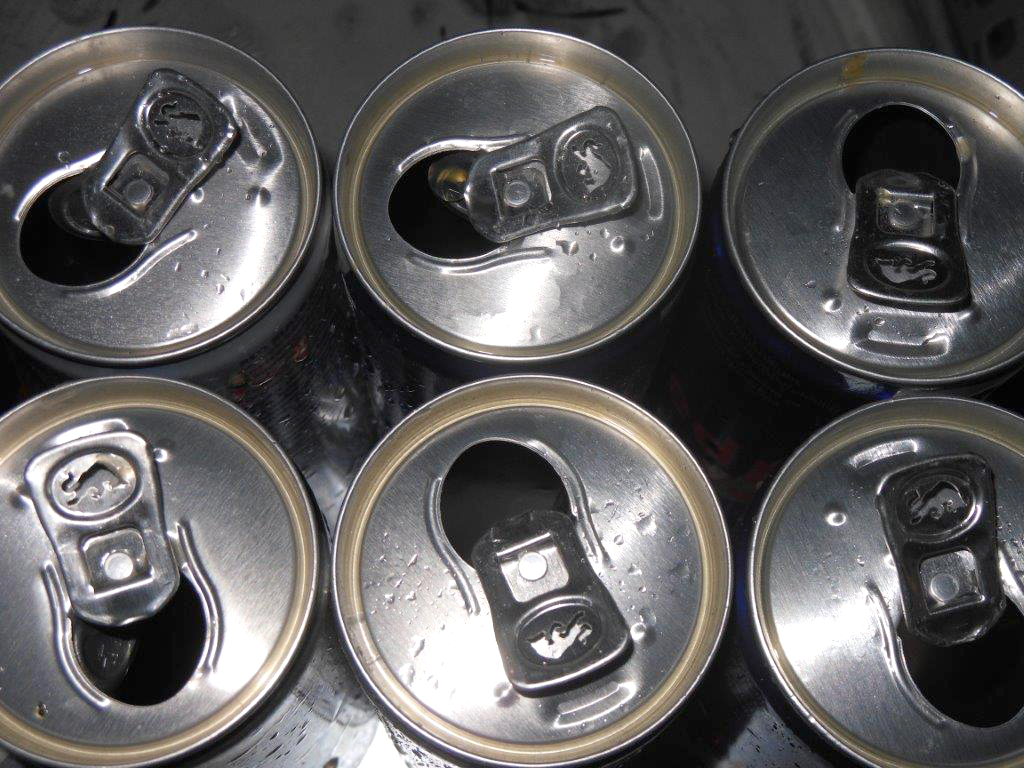
Products: aluminium cans (Igora system)
Info: The recycling of metals has a long tradition because metals are easy to melt down and form into new shapes. Aluminium is an important metal in everyday life. Aluminium can be recycled without any loss of quality. Extracting the ore (bauxite) is very costly and energy intensive. Recycling reduces energy consumption by up to 95% compared to primary production.
Avoiding/reducing: By using reusable packaging, cans can be considerably reduced.
Recycling/environmentally sound disposal: After sorting out any contaminants, the cans are crushed and used in aluminium smelters to make new products.
Aluminium cans are collected through the Igora take-back system (www.igora.ch).

Aluminium cans
General information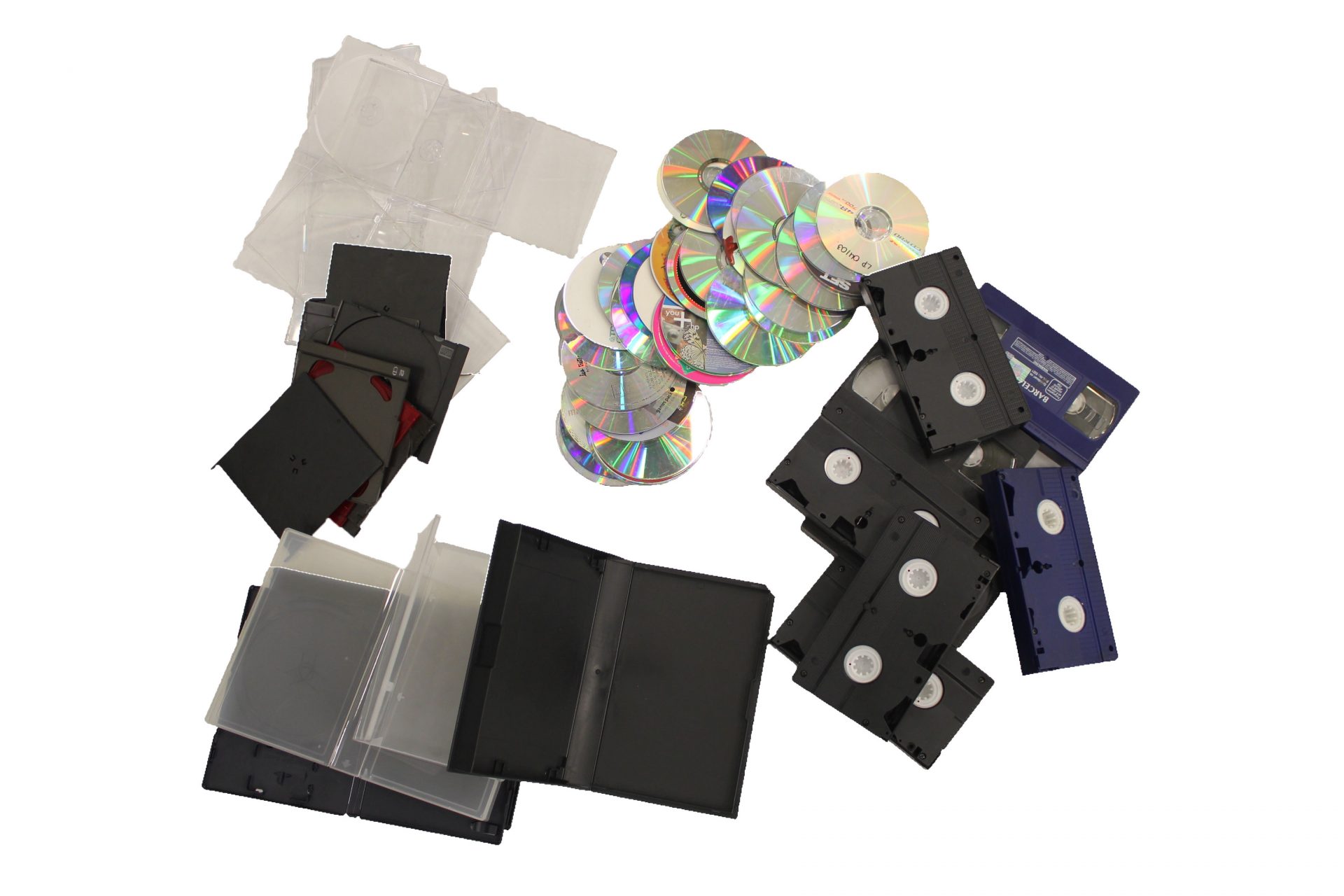
Products: Data carrier: magnetic tapes, video tapes, CDs and DVDs
Info: CDs and DVDs are made of high-quality polycarbonate (brand name Makrolon), while video tapes are made various plastics. The protective sleeves of video tapes are usually made of polypropylene (PP) and the packaging of CDs and DVDs is made of polystyrene (PS).
Avoiding/reducing: Technological developments mean that rewritable media are playing an increasingly important role, and high speed internet means that music and films can be consumed instantly.
Recycling/environmentally sound disposal: Video tapes, CDs and DVDs are removed from their packaging. The video tapes are disassembled to separate the different types of plastic. These can then be sent to high-quality recycling facilities.
Data carrier
General information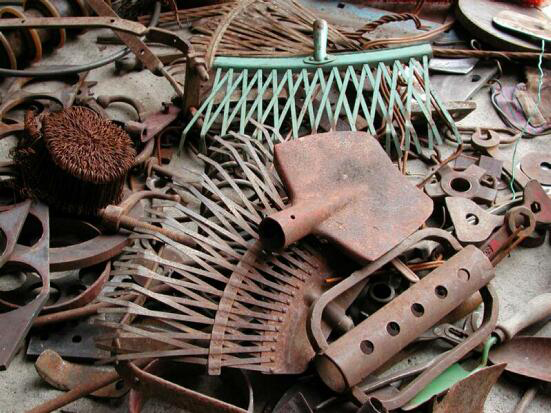
Products: Aluminium, scrap iron, steel and stainless steel (ETP), copper, brass, tin, zinc
Info: The recycling of metals has a long tradition because metals can be easily melted down and formed into new shapes. However, the metals must be free of foreign matter such as grease, plastic, rubber, wood, etc.
Avoiding/reducing: Protect metals from corrosion (rusting) to extend their service life. When you no longer need the products, send them for recycling.
Recycling/environmentally sound disposal: After sorting out any contaminants, the metals are shredded and used in steel mills (ferrous metals) or non-ferrous metal smelters to make new products. Metal products containing oil (e.g. shock absorbers, oil filters) are collected and processed separately for reasons of transport safety (risk of water contamination).
Metals
General information
Products: Small household appliances, lights, large electrical appliances

Info: Electrical appliances contain a number of recyclable materials such as metals and plastics, but they also have a certain pollutant potential due to the capacitors, batteries, mercury switches, etc. that they contain. The collection of small and large household appliances is the responsibility of the SENS eRecycling system.
Avoiding/reducing: When buying new appliances, look out for ease of repair, durability and energy consumption. Good quality means long service life. Make sure they are free of harmful substances and emit low levels of electromagnetic radiation. Use green electricity.
Recycling/environmentally sound disposal: During the recycling process, the appliances are first dismantled by hand and components containing harmful substances are removed. The remaining appliance parts are then shredded and separated into the fractions plastics, iron and non-ferrous metals using various techniques, e.g. magnetic separators, centrifuges or float-sink processes.

Electrical appliances (small / large household appliances)
General information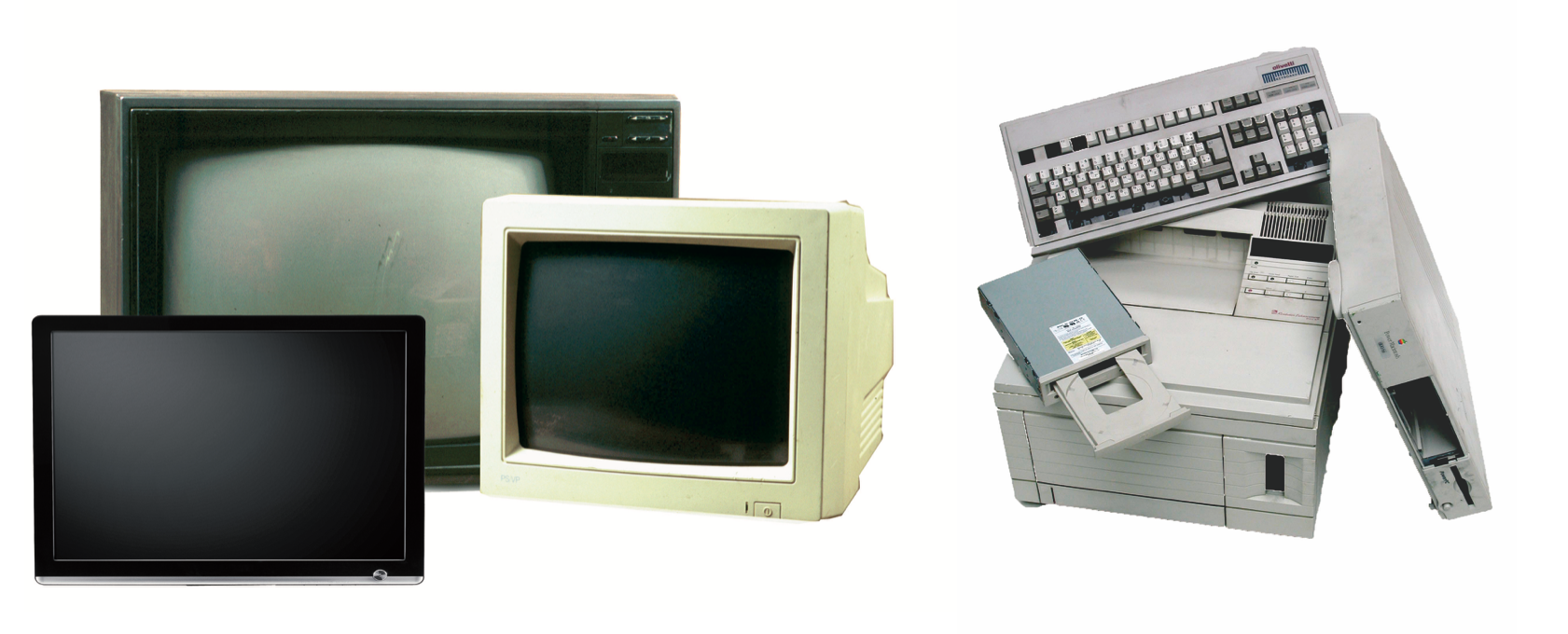
Products: e.g. computers, controllers, monitors, printers, fax machines, photocopiers, consumer electronics, music systems, telephones, LCD screens
Info: On the one hand, appliances contain a number of recyclable materials such as metals and plastics, and on the other hand, they represent a certain pollutant potential due to the capacitors, batteries, mercury switches, etc., that they contain.
The collection of consumer electronics is the responsibility of the SWICO system.
Avoiding/reducing: When buying new equipment, look out for ease of repair, durability and energy consumption. Good quality means long service life. Make sure they are free of harmful substances and emit low levels of electromagnetic radiation. Use green electricity.
Recycling/environmentally sound disposal: During the recycling process, equipment is first disassembled by hand to remove components containing hazardous substances and precious metals (circuit boards). The remaining parts are then shredded and separated into plastics, ferrous and non-ferrous metals using various techniques such as magnetic separators, centrifuges or float-sink processes.

Electrical appliances (IT and consumer electronics)
General information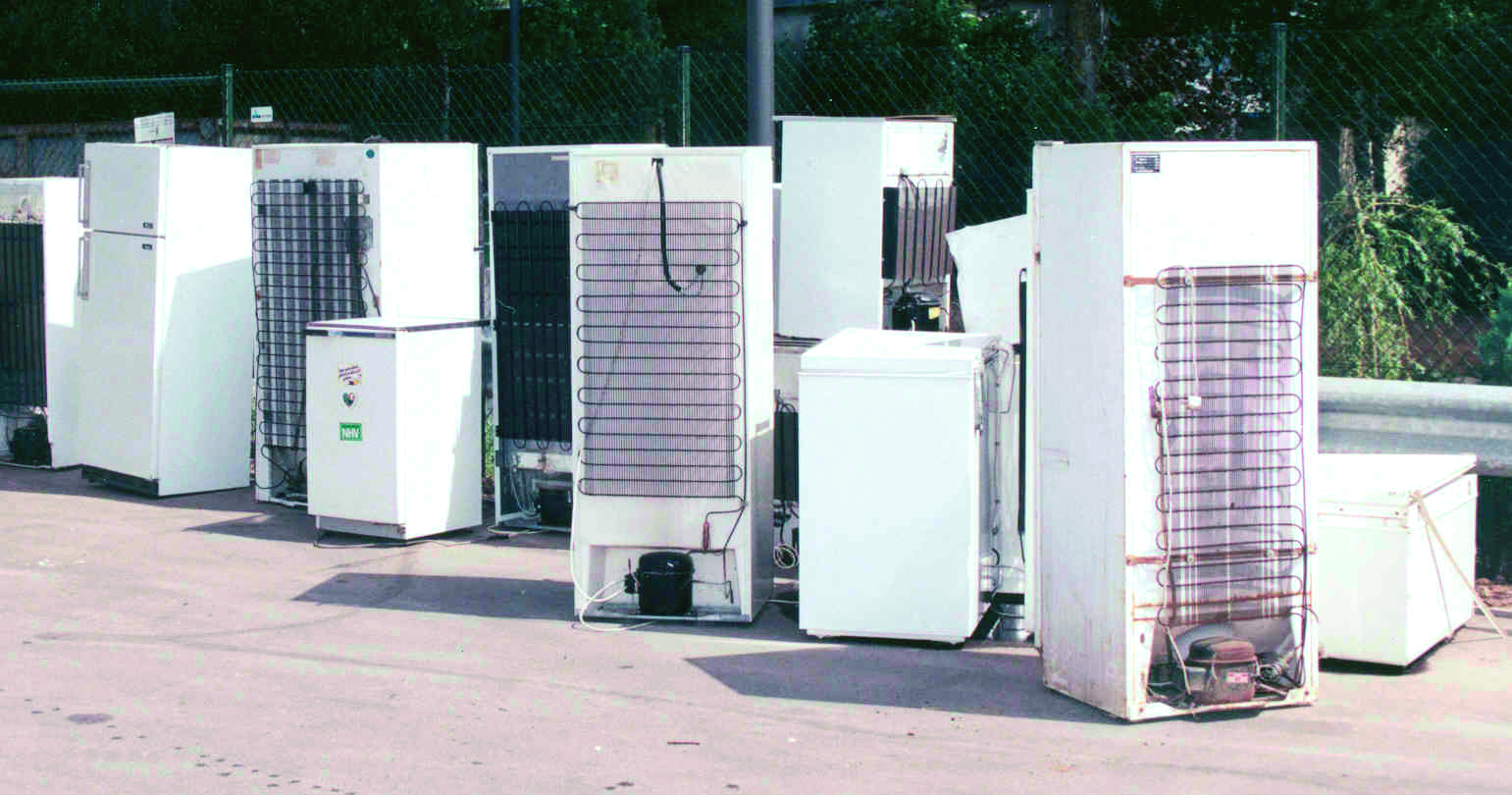
Products: Refrigerators and freezers, air conditioners, dehumidifiers, tumble dryers with heat pumps, etc.
The collection of refrigerators and air conditioners is the responsibility of the SENS eRecycling system.
Info: CFCs (chlorofluorocarbons) were used in a variety of ways until the mid-1990s: as refrigerants in refrigerators, freezers and air conditioners. They were also used as blowing agents in the manufacture of foams. Refrigerators should never be disposed of as scrap. The newer models also contain hazardous substances in the refrigeration circuit, such as flammable pentane, ammonia or partially halogenated HFCs.
Avoiding/reducing: When buying a new appliance, look for a low energy class (A+++ or A++). Avoid damaging the cooling circuit during cleaning or transport.
Recycling/environmentally sound disposal: Refrigerators go through two stages of treatment to remove refrigerant and oil from the refrigeration circuit, as well as blowing agents in the insulation. All recyclable materials such as metals, plastics and OCF foam are recycled. CFCs and VOCs are treated at high temperatures in a suitable facility.

Refrigerators, freezers and air conditioners
General information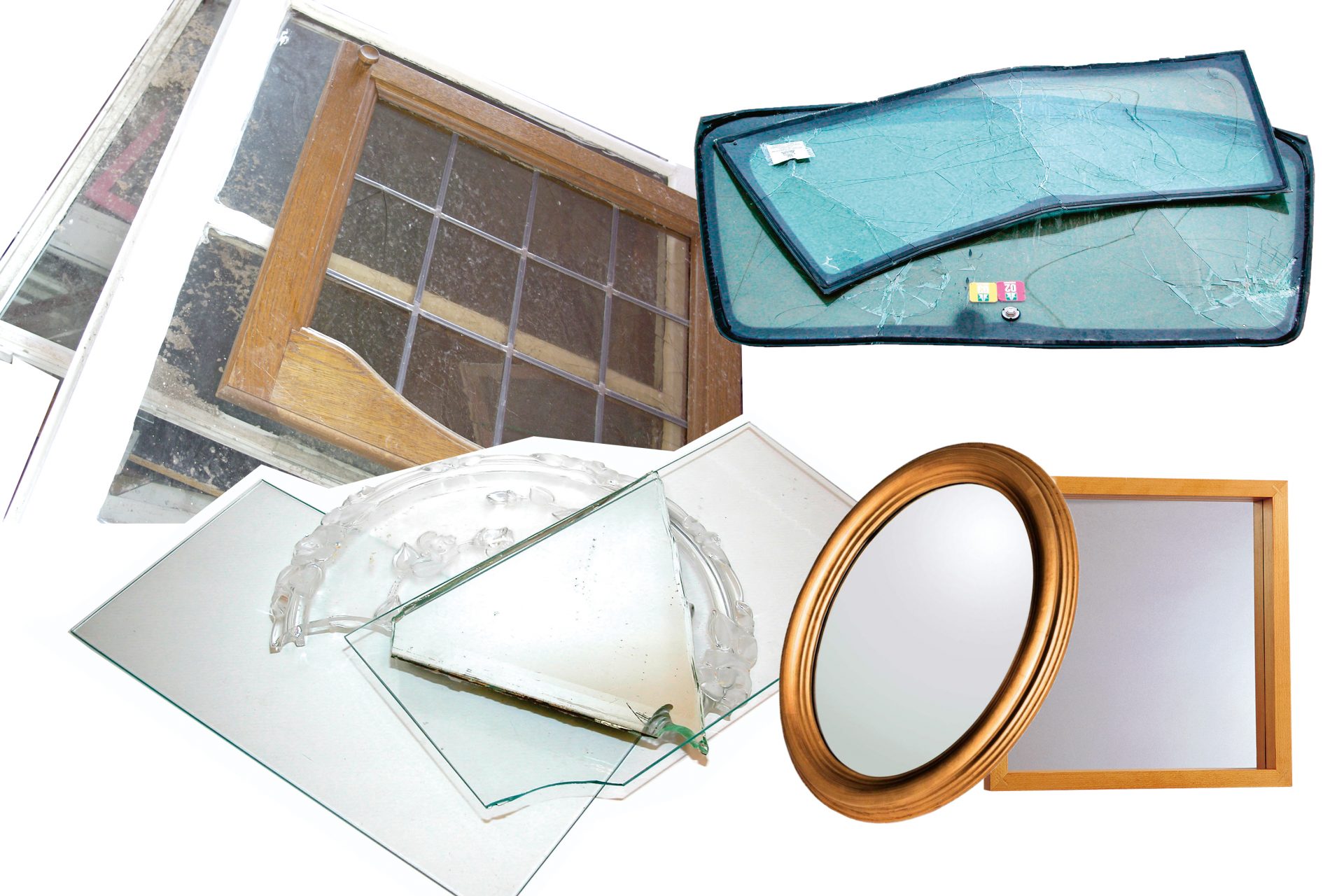
Products: Flat glass with and without frame (windows), window panes, car windows, wired glass, mirror glass
Info: Glass is a material that can be melted down and re-melted into new glass products as often as necessary.
Avoiding/reducing: Minor damage on car windscreens (e.g. stone chipping) can be repaired by specialist companies. Collect flat glass separately from hollow glass (bottle glass), otherwise recycling is impossible.
Recycling/environmentally sound disposal: During processing, well-sorted glass is crushed in several stages and foreign materials such as wood and metal are separated by metal separators, air separators and sieves. The resulting glass cullet/powder can be re-melted and transformed into new products. Wood is used for energy, metals go to the metal industry.
Flat glass
General information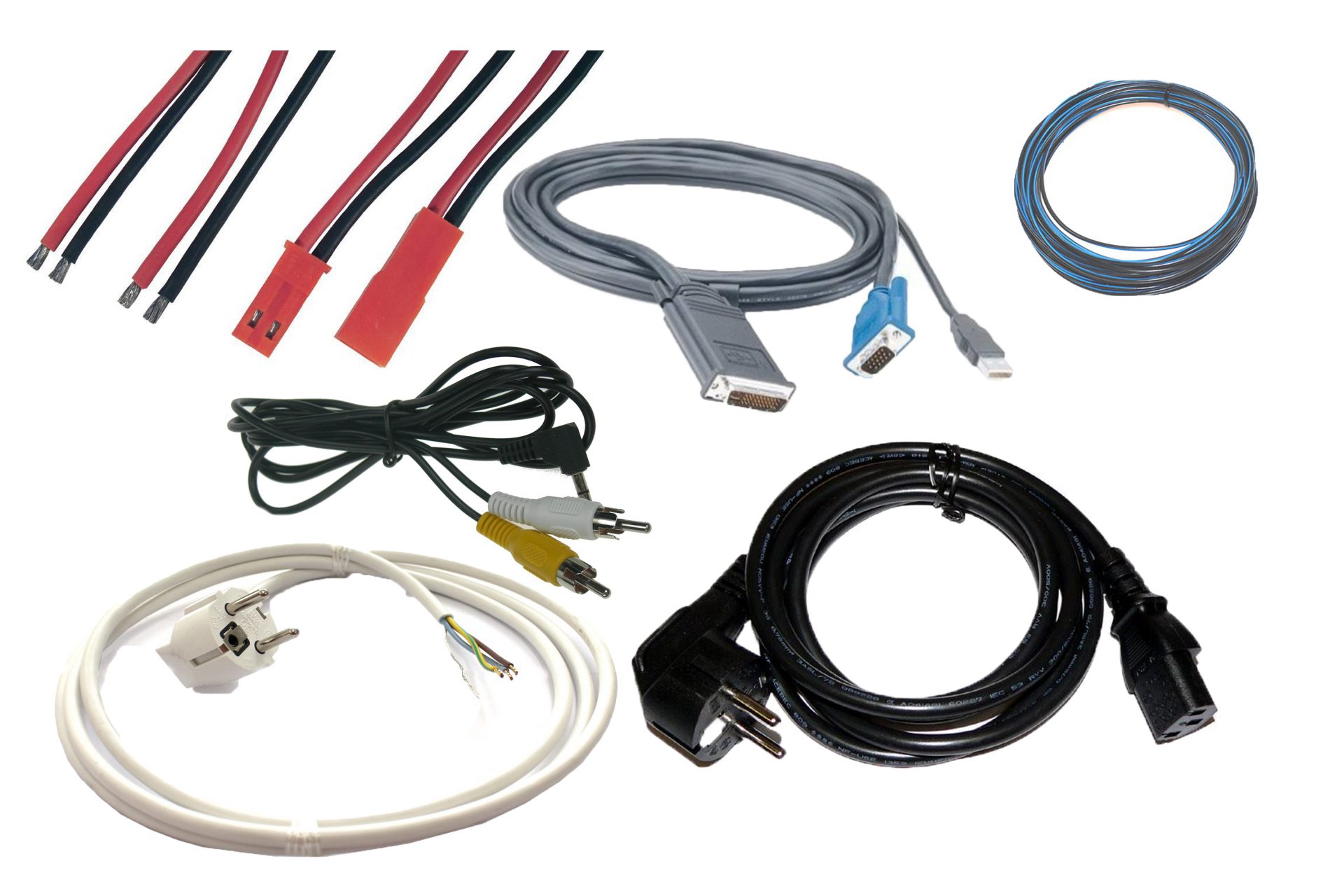
Products: installation cables, appliance cables
Info: Recycling of metals has a long tradition because metals can easily be melted down and formed into new shapes. Power cables are almost exclusively made of copper, with some aluminium.
Avoiding/reducing: When buying a new appliance, look for standardised cables so that you do not need new cables for every purchase.
Recycling/environmentally sound disposal:
Cables are mechanically sheathed. The metals are then shredded and used in metal smelters (non-ferrous metals) to make new products.
The plastics from the sheathing are usually thermally recovered.
Cables
General information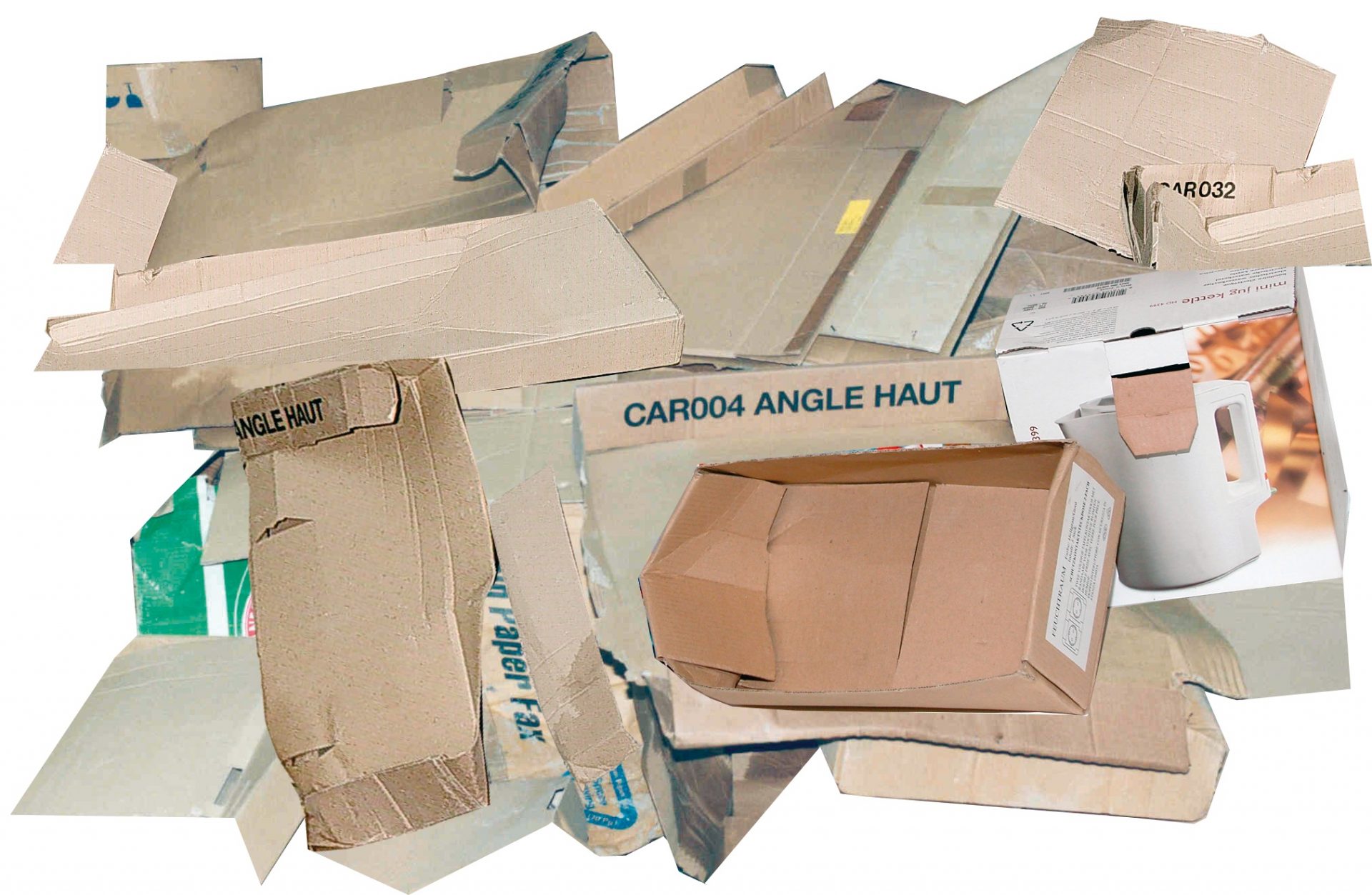
Products: Cardboard packaging, cardboard
Info: Cardboard packaging must be as clean as possible and free from foreign matter or contamination.
Avoiding/reducing: Cardboard packaging is made from cellulose fibres. Recycling is highly recommended as the use of recovered paper significantly reduces the environmental impact of paper production and deforestation, as well as reducing energy and fresh water requirements. Print economically (print only what you need and print on both sides).
Recycling/environmentally sound disposal: Fibres are mixed with water to make paper pulp, which goes through several stages of cleaning. Coatings and inks are removed, then the pulp is dewatered and made into new cardboard.
Cardboard
General information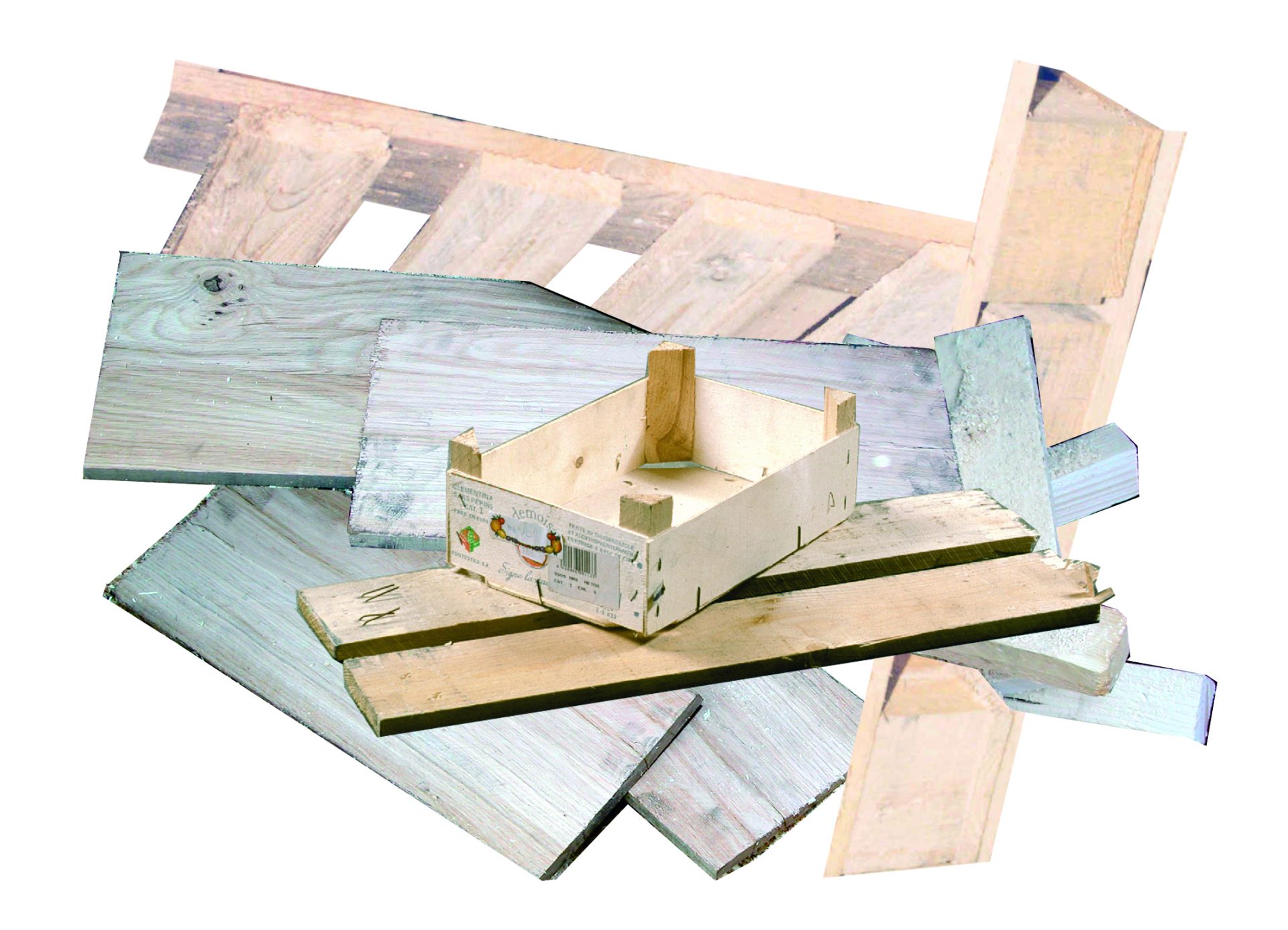
Products: Furniture parts, boards, wood shavings, crates, pallets, other wood products; natural and untreated wood and problematic wood waste must be collected separately.
Info: Coatings on wood such as paints, lacquers and wood preservatives contain harmful substances that should not be released into the environment. The same applies to plywood and chipboard containing glues, binders and resins. Wood dust, especially from beech and oak, is considered carcinogenic. When working with these types of wood, make sure you use protective equipment that works properly.
Avoiding/reducing: Protect your wood with appropriate treatment. The use of wood preservatives can be reduced by constructive wood protection. Take care of your furniture and pass on old furniture or other products when you no longer need them.
Recycling/environmentally sound disposal: Please note that only untreated wood may be used as firewood. Otherwise it can be used as a raw material for chipboard production. Treated wood is burned in special plants for energy recovery.
Wood
General information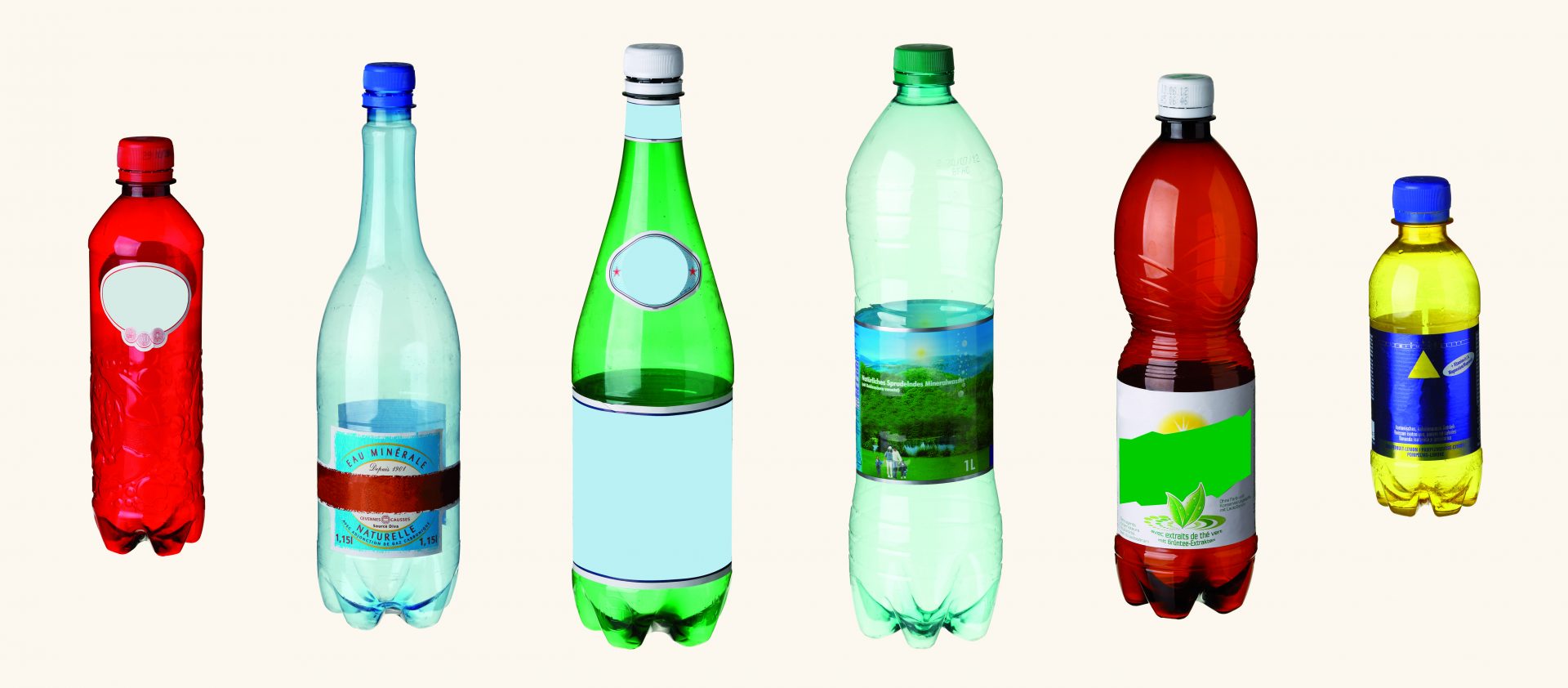
Products: PET bottles
Info: PET (polyethylene terephthalate) is made from petroleum/natural gas and is 100% recyclable. The advantage of PET bottles is their low weight. All sales outlets in Switzerland accept empty PET beverage bottles free of charge via the national PET-Recycling Switzerland system.
Avoiding/reducing: Beverage bottles can be reduced by drinking tap water and using syrups, etc.
Recycling/environmentally sound disposal: Unmixed PET bottles are processed into new products and return to the economic cycle.
PET bottles are collected via the PET take-back system http://www.petrecycling.ch.
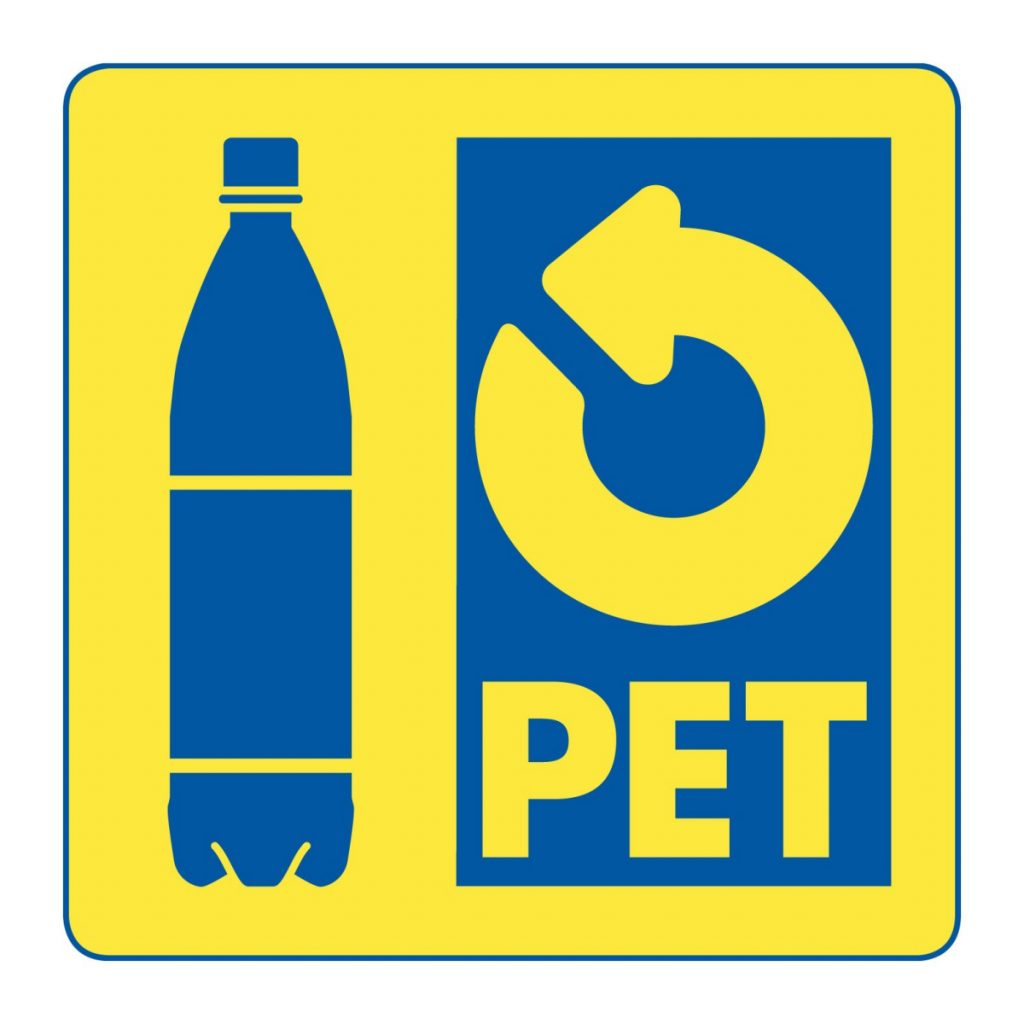
PET plastic bottles
General information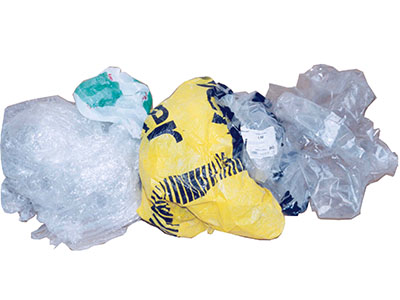
Products: PE (polyethylene) plastic film (PEHD and LDPE).
Info: Absolute purity of the raw material is a prerequisite for high-quality recycling. It is not enough for products to be made from the same raw material, e.g. PE, they must also come from the same area of application as the material properties will only match then.
Avoiding/reducing: Use reusable packaging. Use reusable shopping bags. Buy loose goods if possible. A lot of packaging can be avoided by considering alternatives.
Recycling/environmentally sound disposal: The various well-sorted plastics are processed into new products and return to the economic cycle. Contaminated or undefined films are thermally recovered, i.e. incinerated to generate energy.
Plastic films (clean)
General information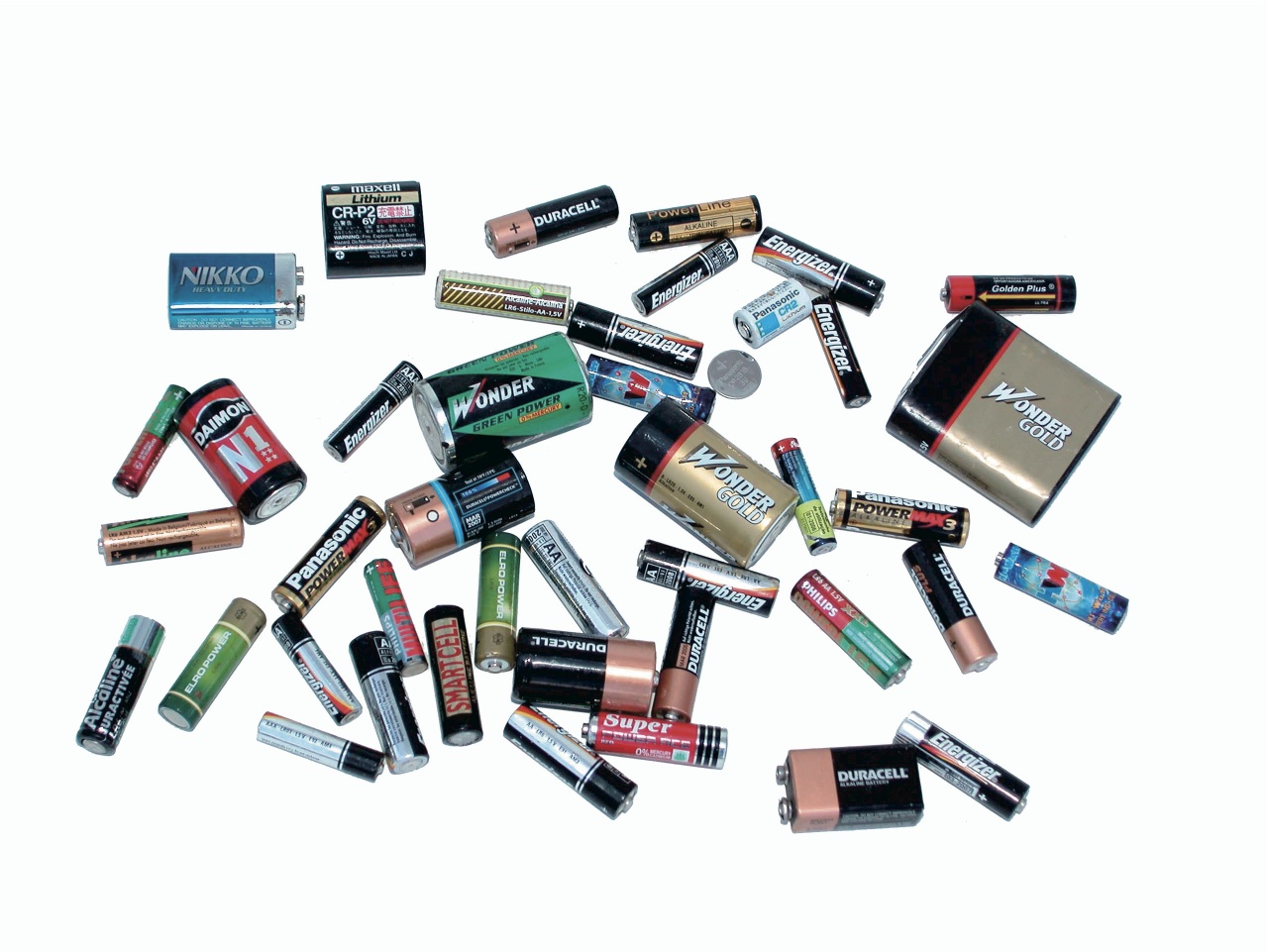
Products: Zinc, carbon, alkaline manganese and lithium batteries, mercury button cells, small rechargeable batteries. The collection of used batteries is the responsibility of the Inobat system (Inobat – www.inobat.ch).
Info: Batteries may contain heavy metals that are harmful to the environment and fatal to the human organism.
Avoiding/reducing: If possible, use battery-free devices, e.g. with solar cells. Use modern rechargeable batteries (Ni-MH batteries, lithium batteries).
Recycling/environmentally sound disposal: Dry batteries are heated to 700 °C in a pyrolysis plant. Organic components (paper, cardboard, plastic) are incinerated. The metals iron, manganese and zinc are recovered by smelting, mercury by distillation (www.batrec.ch).
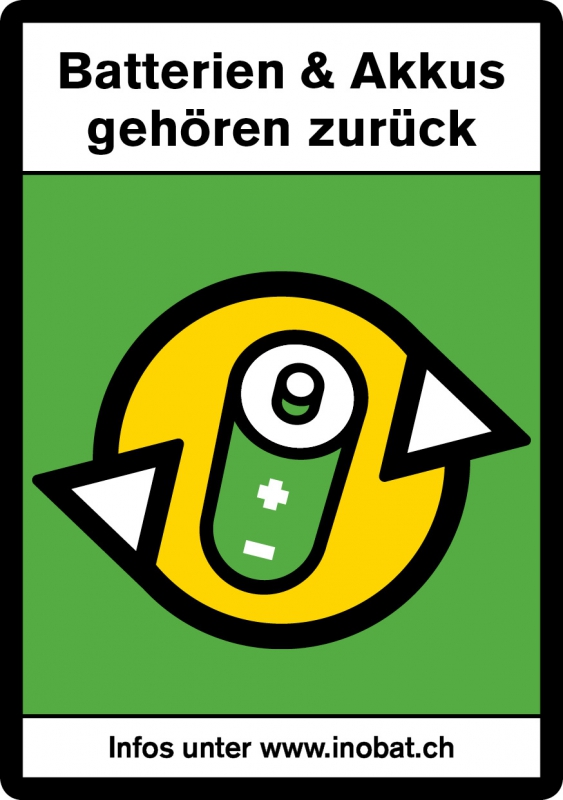
Dry batteries
General information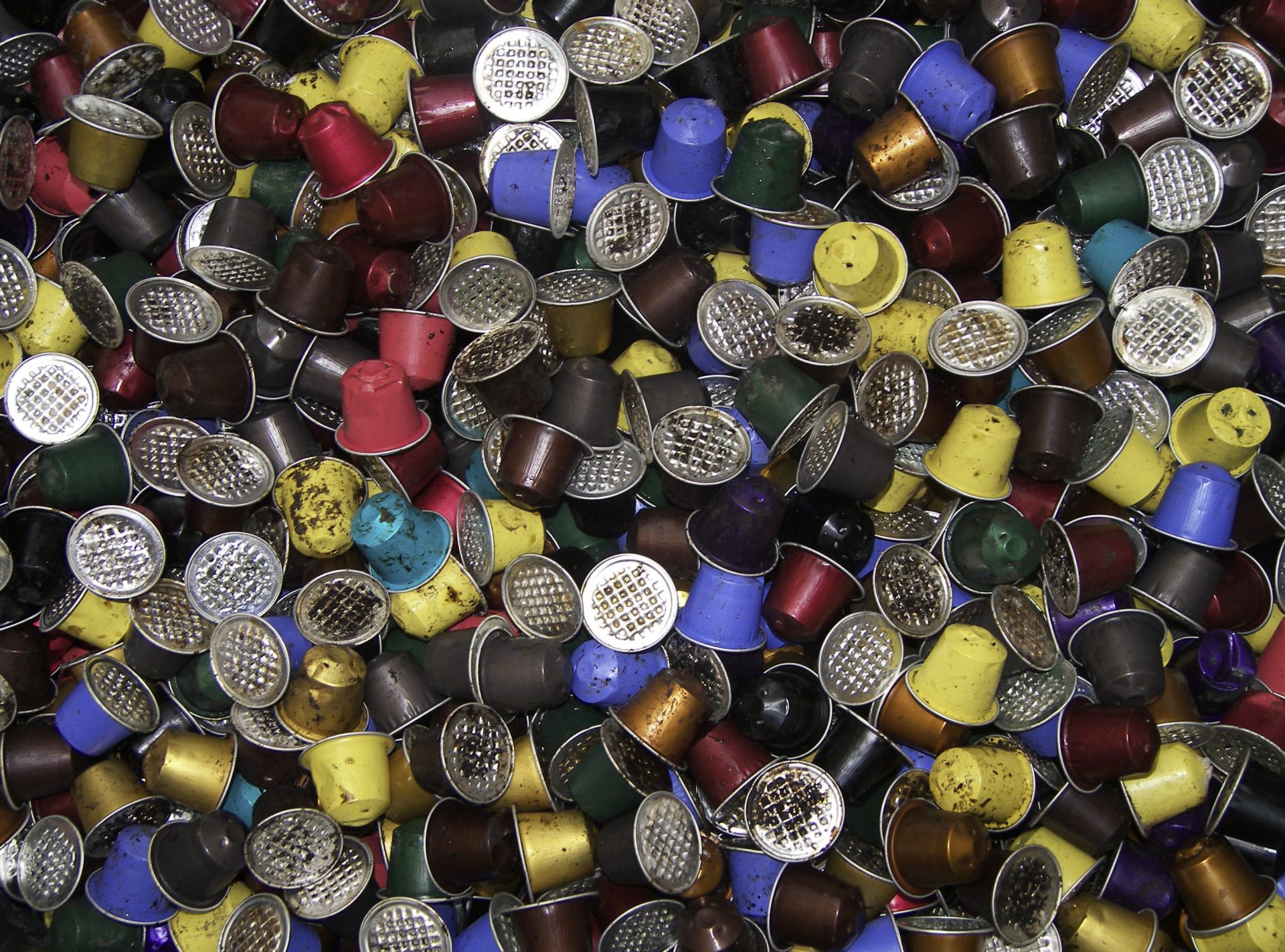
Products: Nespresso capsules
Info: Nespresso capsules are made of 100% aluminium. This protects the contents from light and oxygen.
Alumnium can be recycled without loss of quality. Energy consumption is reduced by up to 95% compared to primary production.
Avoiding/reducing: Nespresso capsules: Processing for optimal recycling is easier if the capsules are returned without any packaging.
Recycling/environmentally sound disposal: The capsules are crushed in a modern plant. Sieves are used to separate the aluminium from the coffee grounds. The aluminium is melted down (only 5% energy consumption compared to the initial production) and used as a new raw material. The coffee grounds are processed into fertiliser in a composting plant and the foil residues are used for thermal recovery.

Nespresso capsules
General information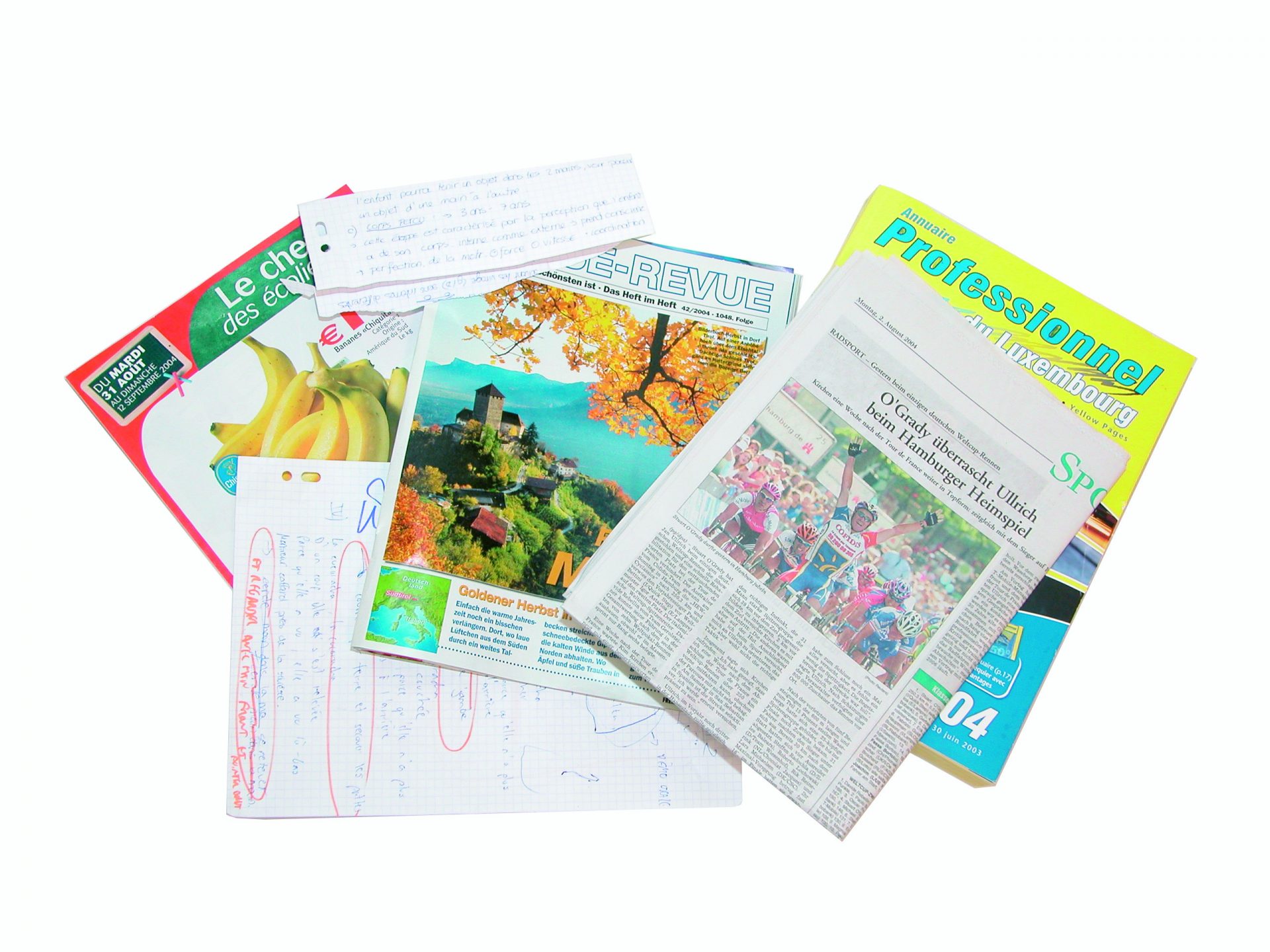
Products: Paper, magazines, periodicals, books
Info: Paper must be as clean as possible and free from foreign matter or contamination. Short-fibre tissue paper should not be included in waste paper. Paper soiled with paint or oil is contaminated with harmful substances and must be collected separately.
Avoiding/reducing:
Paper is made of cellulose fibres. Recycling paper is a good idea as it significantly reduces the environmental impact of paper production and deforestation, as well as energy and fresh water consumption.
Print economically (print only what you need and print on both sides).
Recycling/environmentally sound disposal: Fibres are mixed with water to make paper pulp, which goes through several stages of cleaning. Coatings and inks are removed, then the pulp is dewatered and made into new paper.
Paper
General information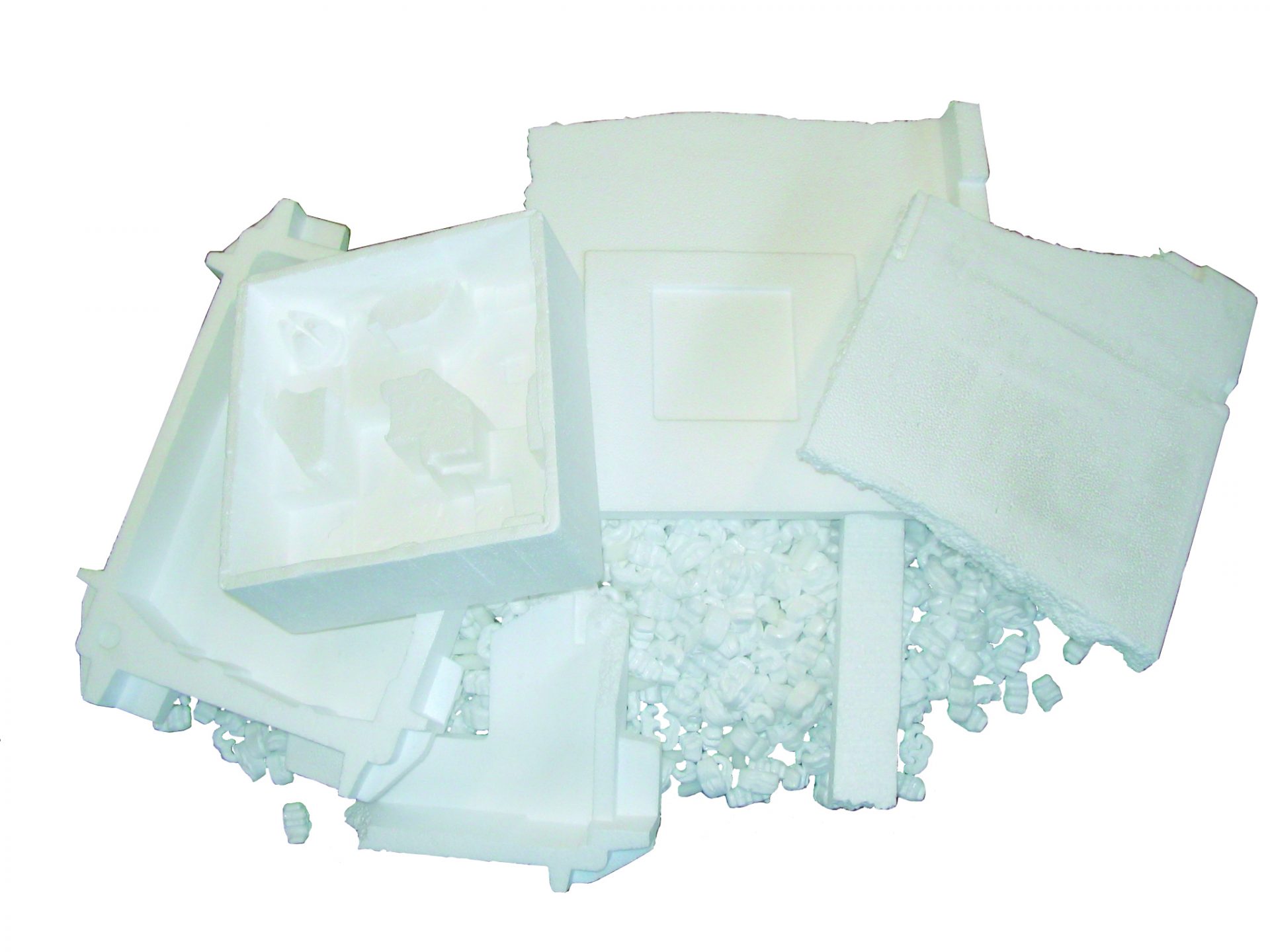
Products: Divided into the categories of polystyrene mouldings (packaging parts), insulation material and packaging chips
Info: Styropor® is a brand name for expanded polystyrene (EPS). The process of ‘inflating’ the plastic creates a lightweight material that can be used as a protective packaging material or insulation. Similar shapes can also be made from PP (polypropylene), which can be black or white. Packaging chips can also be made from other raw materials, such as corn starch.
Avoiding/reducing: Use reusable packaging and reuse packaging chips when you pack something yourself. There are a number of alternatives for insulation, ask your retailer.
Recycling/environmentally sound disposal: Pure polystyrene can be easily recycled. It is used to make plastic parts, for example office supplies like rulers or parts parts for the automotive and electronics industries.
Polystyrene
General informationGlossary of problematic substances
Containers with hazardous substances are easily recognizable by their hazard symbol.

The exclamation mark for irritating substances (e.g. irritating the respiratory system)

The dead tree and fish for substances dangerous for water

The body figure for substances very dangerous for health (e.g. cancerous)

The skull for toxic products

The flame for inflammable or fire spreading solids, liquids and gases

Gas bottle for gas under pressure

The dripping test tubes on hand and surface for “caustic”
Caution : Even products without a hazard symbol and "biological" or "ecological" products can pose a health risk if the safety measures are not followed. Read the information in the instructions for use or on the label carefully!
